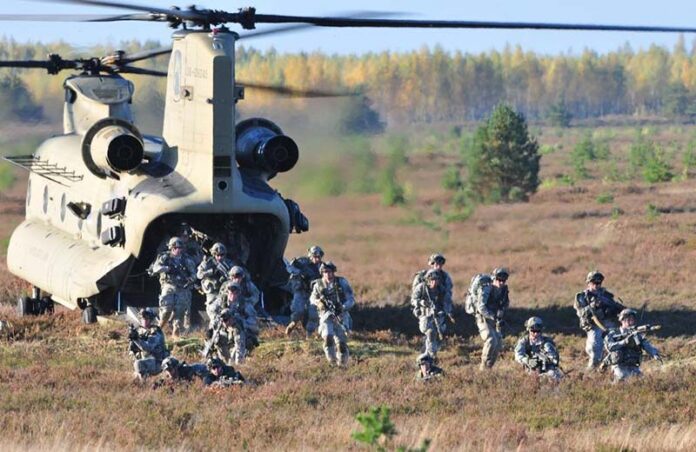The leaders of the NATO member states held an emergency meeting on the situation in Ukraine on the 25th. After the meeting, NATO Secretary-General Jens Stoltenberg announced that NATO is deploying its rapid response force to respond if necessary. Respond quickly.
Stoltenberg said that NATO members decided on the 24th to launch a defense plan, which will mobilize part of the land, sea and air forces of NATO's rapid response force, but he did not explain where these forces would be deployed. According to DPA, ground troops may be sent to Romania.
Stoltenberg also said that part of the NATO Rapid Response Force will go to Norway for drills, which is the first time NATO has deployed this force within NATO for "deterrence" and "defense" purposes.
In an interview with French media on the 25th, Thierry Bourkehard, chief of the French army's general staff, revealed that France is preparing to send about 500 military personnel and a group of armored vehicles to Romania to cooperate with NATO's military measures to "clearly convey a signal of strategic unity".
He said that "in view of the war in Ukraine", France is preparing to maintain a military presence in Estonia, a NATO member state adjacent to Ukraine, after March, continuing to station 200 to 250 soldiers and equipped with armored vehicles.
German Chancellor Olaf Scholz said at a NATO meeting that after Russia's military action, it needs to increase the deployment of troops in NATO's Eastern European members.
NATO said the moves were "precautionary, appropriate and non-escalation".
NATO established the Rapid Response Force in 2003, with a current strength of 40,000 troops, including a "high combat capability" force composed of land, air, sea and special operations forces.
The United States and NATO have previously stated that since Ukraine is not a member of NATO, the United States and NATO will not send troops to Ukraine to help Ukraine fight. However, several NATO members have supplied Ukraine with arms, while increasing their military presence in NATO's eastern member states.
When the NATO emergency meeting was underway, the first additional British troops and military vehicles carrying weapons and equipment had arrived at the Tapa military base in Estonia. The UK plans to send a total of more than 850 additional soldiers, which will roughly double the number of British troops in Estonia.
Italy said it was preparing to send an additional 3,400 troops to NATO's eastern member states; Denmark announced plans to send an additional 20 F-16 fighter jets.
US Department of Defense spokesman John Kirby said on the 25th that the United States will send an additional 7,000 troops to Germany this week, and some troops will be on standby at home. The type and size of U.S. forces to Europe depend on NATO's specific needs, he said.
He also emphasized that the deployment of the rapid response force was to protect NATO member states, not to participate in the war in Ukraine.
NATO has sent additional troops to the eastern border in the name of defense, ignoring Russia's security demands for a long time. The Russian side said that NATO's continued eastward expansion and deployment of weapons threatened Russia's national security, and this practice must be stopped. Russia asked the United States and NATO to provide legal guarantees in December last year to rule out the possibility of NATO's further eastward expansion, but the United States and NATO did not address Russia's core security concerns in their responses.







































